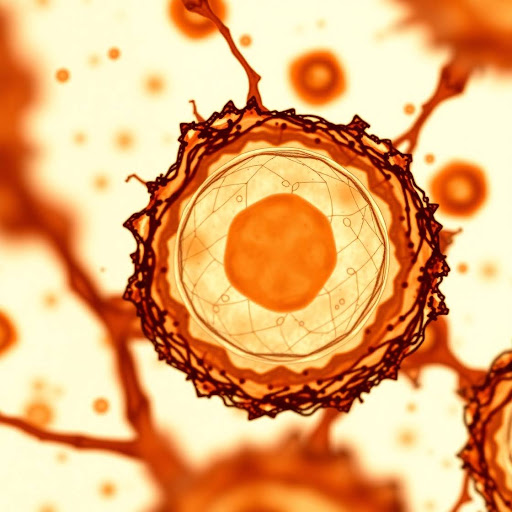Jurkat cells are special cells that scientists use to study how our immune system works and to learn more about cancer. These cells come from a type of white blood cell called T cells. Scientists first got these cells from a young boy who had a kind of blood cancer called T-cell leukemia in the 1970s. Now, they use Jurkat cells in labs all over the world to help them understand how our bodies fight diseases and how cancer grows. These cells have become an important tool in immunology and cancer research, providing insights that have led to many breakthroughs in our understanding of how cells work and how diseases happen.
In this article, we’ll explore why Jurkat cells are so important for medical research. We’ll look at how scientists use them to study the immune system, test new cancer treatments, and even try to make better medicines. Let’s see why these tiny cells are making such a big difference in science, and how they continue to shape our understanding of human health and disease!
Key Points: Jurkat Cells in Research
- Jurkat cells are derived from human T lymphocytes, originating from a boy with T-cell leukemia
- Widely used as a model system in immunology and cancer research
- Essential for studying T-cell receptor signaling and activation mechanisms
- Valuable in HIV research, helping identify viral receptors and co-receptors
- Used to investigate cancer biology, particularly T-cell leukemia
- Important tool for drug discovery and testing in immunotherapy development
- Useful in genetic engineering studies, including CRISPR-Cas9 research
- Help researchers understand cytokine production and immune responses
- Contribute to studies on autoimmune disorders and immunodeficiency diseases
- Limitations include genetic abnormalities that may not fully represent normal T-cells
- Ethical considerations exist regarding their use in research
- Play a role in developing personalized medicine approaches
- Aid in advancing cancer treatment strategies, including targeted therapies
- Facilitate studies on T-cell activation and intracellular signaling pathways
- Support research in synthetic biology and cellular modifications
What Are Jurkat Cells?
Jurkat cells are a special type of cell that scientists use in their labs. They originally came from a boy who had a blood cancer called T cell leukemia. What makes these cells so useful is that they grow quickly and easily in lab dishes. This means scientists always have plenty of cells to work with. The ability to grow fast and keep their characteristics over many generations makes Jurkat cells great for long-term studies and experiments that need lots of cells.
These cells are like the T cells in our bodies, which are an important part of our immune system. T cells help us fight off diseases and infections. Jurkat cells act a lot like normal T cells, but they can be grown in large numbers in a lab. This makes them perfect for studying how our immune system works and how cancer develops. They have many of the same parts on their surface and inside as normal T cells, which lets researchers study complex immune responses in a controlled environment.
One of the most important things about Jurkat cells is that they can be used to study how T cells respond to different signals. When T cells in our body detect something harmful, they get activated and start fighting. Scientists can use Jurkat cells to see how this activation process works. They can also use these cells to test new medicines and see how they might affect our immune system. This ability to copy T cell activation has been crucial in understanding how T cells work, how they make important chemicals, and the molecular ways our immune responses happen.
How Scientists Use Jurkat Cells
Scientists use Jurkat cells in many different ways to study health and disease. Here are some of the main ways these cells help in research:
1. Studying the Immune System
Jurkat cells are great for understanding how our immune system works. Scientists use them to see how T cells get activated and how they produce important chemicals called cytokines. These chemicals help our body fight off infections and diseases. By studying Jurkat cells, researchers can learn more about how our body defends itself against harmful invaders. They can investigate the complex signaling that happens inside T cells when they meet something foreign, providing insights into how immune activation and regulation work at a molecular level.
These cells also help scientists understand what happens when the immune system doesn’t work properly. They can use Jurkat cells to study autoimmune diseases, where the body’s immune system attacks its own healthy cells by mistake. This research could lead to better treatments for conditions like lupus or rheumatoid arthritis. Additionally, Jurkat cells have been important in studying immunodeficiency disorders, helping researchers understand why some people get sick more easily and how to potentially boost their immune function.
2. Cancer Research
Since Jurkat cells come from a type of blood cancer, they’re very useful for studying how cancer develops and grows. Scientists use these cells to test new cancer treatments and see how effective they might be. They can also use Jurkat cells to understand how cancer cells survive and spread in the body. This includes looking at the molecular pathways that allow cancer cells to hide from the immune system and resist traditional treatments.
One important area of research is studying how cancer cells can hide from the immune system. By using Jurkat cells, scientists can develop new ways to help the immune system find and destroy cancer cells more effectively. This has led to big improvements in immunotherapy, a promising way to treat cancer that uses the body’s own immune system to fight cancer. Researchers can use Jurkat cells to test potential immunotherapy drugs and strategies, helping to speed up the development of these cutting-edge treatments.
3. Testing New Medicines
Before new medicines can be used to treat people, they need to be tested to make sure they’re safe and work well. Jurkat cells play a big role in this process. Scientists can use these cells to see how different drugs affect T cells and the immune system. This helps them understand if a new medicine might work well or if it might cause harmful side effects. The ability to test drugs on Jurkat cells before trying them on animals or humans can save time and resources in making new medicines.
Researchers also use Jurkat cells to study how cancer cells respond to different treatments. This can help them develop more effective cancer therapies that target cancer cells while leaving healthy cells alone. By understanding how different drugs interact with cellular pathways in Jurkat cells, scientists can design more targeted and effective treatments. This approach has been particularly valuable in developing precision medicine strategies, where treatments are tailored to the specific genetic or molecular profile of a patient’s cancer.
4. Genetic Research
Jurkat cells are also very useful for studying genes and how they work. Scientists can use these cells to see what happens when they change certain genes. This helps them understand how different genes affect T cell function and how changes in genes might lead to diseases. The genetic stability of Jurkat cells makes them an excellent model for studying the effects of gene modifications over time.
One exciting area of research is using a technique called CRISPR to edit genes in Jurkat cells. This allows scientists to make very precise changes to the cells’ DNA and see how it affects their behavior. This kind of research could lead to new ways of treating genetic diseases or improving our immune system’s ability to fight off infections and cancer. CRISPR-modified Jurkat cells have been used to identify key genes involved in T cell activation, cancer progression, and drug resistance, opening up new ways to treat these conditions.
Limitations and Ethical Considerations
While Jurkat cells are incredibly useful for research, it’s important to understand their limitations. These cells are not exactly the same as the T cells in our bodies. They’ve been growing in labs for many years, which means they might behave differently than normal T cells in some ways. For example, Jurkat cells have certain genetic changes that have built up over time, which may affect how they respond to certain things or treatments. Researchers must always be aware of these differences when looking at results from Jurkat cell experiments.
Scientists have to be careful when they use results from Jurkat cell experiments to understand human health. They often need to double-check their findings using other types of cells or even by studying real patients. This process of checking is crucial to ensure that discoveries made using Jurkat cells apply to actual human biology. Additionally, researchers must consider the limitations of using a single cell line to represent the diverse population of T cells found in the human body.
There are also ethical things to think about when using Jurkat cells. These cells originally came from a person, and it’s important to use them respectfully and for good purposes. Scientists have to follow strict rules when they work with these cells to make sure they’re being used properly and safely. This includes thinking about privacy and consent, as well as making sure that the research done with these cells follows ethical guidelines for human subject research. The scientific community continues to talk about the ethical implications of using cell lines derived from individuals, especially in cases where informed consent may not have been obtained according to current standards.
The Future of Jurkat Cell Research
Jurkat cells continue to be an important tool in medical research. Scientists are always finding new ways to use these cells to study diseases and develop better treatments. Here are some exciting areas where Jurkat cells might help in the future:
- Personalized Medicine: Researchers might use Jurkat cells to test how different people’s immune systems would respond to certain treatments. This could help doctors choose the best medicine for each patient. By creating modified Jurkat cells that mimic the genetic profile of individual patients, researchers could predict treatment outcomes and tailor therapies more effectively.
- Immunotherapy: Jurkat cells are helping scientists develop new ways to boost our immune system to fight cancer. This could lead to more effective and less harmful cancer treatments. For example, researchers are using Jurkat cells to design and test CAR-T cell therapies, a revolutionary approach that reprograms a patient’s own T cells to target cancer.
- Synthetic Biology: Scientists are exploring ways to modify Jurkat cells to give them new abilities. This could create “super cells” that are even better at fighting diseases. These engineered cells could be designed to produce specific therapeutic proteins or to have enhanced abilities to recognize and eliminate cancer cells.
- Drug Discovery: High-throughput screening of drug candidates using Jurkat cells can speed up the process of finding potential new treatments for a variety of diseases. This approach allows researchers to quickly test thousands of compounds for their effects on T cell function and viability.
- Studying Rare Diseases: Jurkat cells can be modified to mimic rare genetic disorders affecting T cells, providing a valuable tool for studying these conditions and developing targeted therapies.
As technology improves, scientists will be able to study Jurkat cells in even more detail. This could lead to big breakthroughs in understanding how our immune system works and how to keep us healthy. Advanced imaging techniques, single-cell analysis methods, and artificial intelligence are all being applied to Jurkat cell research, promising to reveal new insights into cellular behavior and disease mechanisms. The continued use and development of Jurkat cell models will likely play a crucial role in advancing our understanding of immunology, cancer biology, and drug development for years to come.
Conclusion
Jurkat cells have been a vital tool in medical research for many years, and they continue to help scientists make important discoveries. From understanding how our immune system works to developing new treatments for cancer and other diseases, these cells play a crucial role in advancing medical science. Their versatility and reliability as a model system have made them indispensable in laboratories around the world, contributing to countless breakthroughs in immunology and cancer research.
While there are some limitations to using Jurkat cells, they remain an invaluable resource for researchers around the world. As we look to the future, it’s clear that Jurkat cells will continue to be at the forefront of exciting new developments in immunology, cancer research, and drug discovery. The ongoing refinement of techniques for working with these cells, combined with new technologies like gene editing and advanced imaging, promises to unlock even more potential for Jurkat cells in scientific research.
By studying these remarkable cells, scientists are unlocking secrets about our health and paving the way for better treatments and cures. The story of Jurkat cells reminds us of the incredible progress we can make when we use the tools of science to understand and improve human health. As we continue to face new health challenges, from emerging infectious diseases to complex chronic conditions, Jurkat cells will undoubtedly play a crucial role in developing the next generation of medical innovations. Their legacy in scientific research serves as a testament to the power of cellular biology in advancing our understanding of human health and disease.









